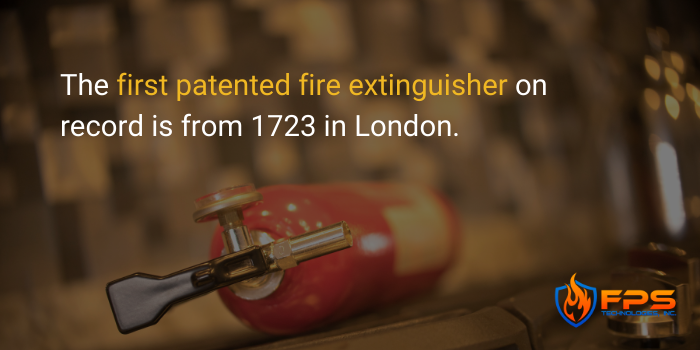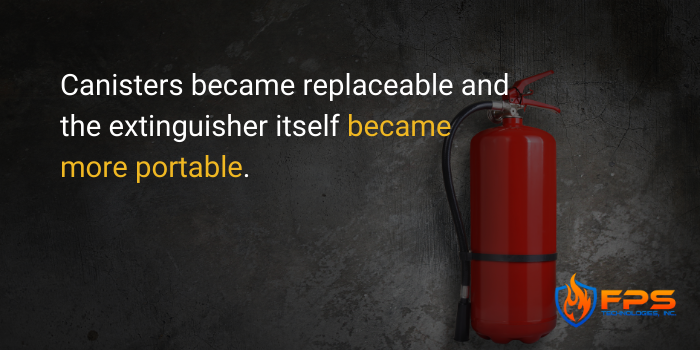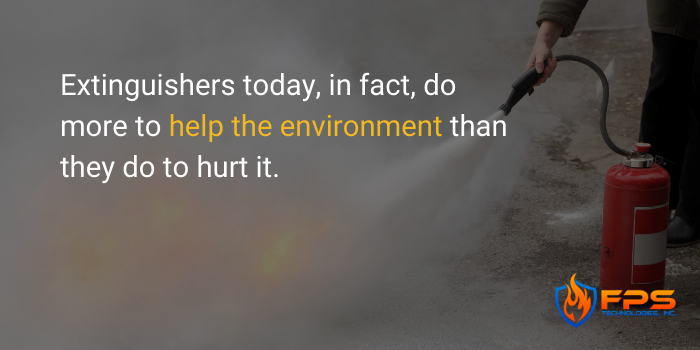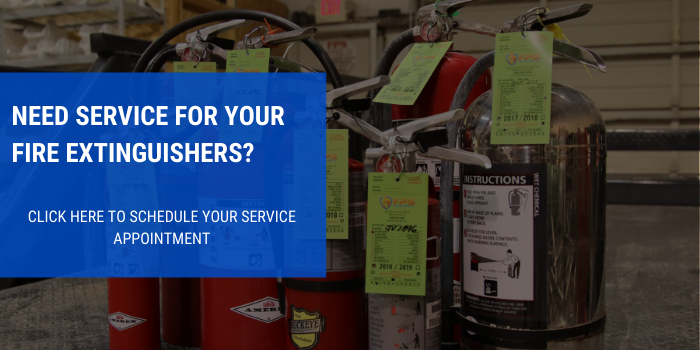As you may know now, there are many different classifications of fire extinguishers. Throughout the years though, this has not always been the case. Stopping a fire used to consist of a chain of people carrying buckets from the nearest river. You would be lucky if you saved your entire house from burning down, let alone the whole block.
Thankfully, fire extinguishers have come a long way, but it begs the question, where did they start?
1723
The first patented fire extinguisher on record is from 1723 in London by the chemist Ambrose Godfrey. He made a vessel containing a fire extinguishing solution which used a small gunpowder explosion to spray the solution on the fire.

He had many other iterations of fire extinguishers including one method which used glass orbs filled with a water-based solution. The user threw them on the fire almost like a grenade.
1818
With the advent of the industrial revolution, water was not enough to put out oil and grease fires, so innovators took action, resorting to chemical reactions to stop fires. George William Manby invented the first modern fire extinguisher, using a copper material with a potassium carbonate solution.
The vessel held 3 gallons of the solution and used pressure to fire it. The canister was massive and used a valve at the top which would puncture the canister and release the air pressure within.
1881
In the late 19th century, the fire extinguisher market expanded, and manufacturers began to develop new types of fire extinguishers for a wider array of fires.
In the U.S., Almond M. Granger patented a soda-acid extinguisher that used a chemical reaction between sodium bicarbonate solution and sulphuric acid to launch the water inside the canister.
In the same year, Read and Campbell of England invented the cartridge-operated extinguisher. The model was similar but used a water-based solution instead.
1910
Carbon Tetrachloride (CTC) was introduced to the fire extinguisher industry in the early 20th century. This was not only a step forward in stopping fires at a chemical level, but it also brought a more practical use to the fire extinguisher. Canisters became replaceable and the extinguisher itself became more portable. A hand pump replaced the valve which previously stood on top of the canister.

1924
The first Carbon Dioxide extinguisher in the U.S. was invented by the Walter Kidd company in 1924. It came about as the Bell telephone company needed an extinguisher that stopped electrical fires, as water extinguishers could electrocute the user. Because of its practical applications and ozone-friendly solution, CO2 extinguishers quickly became a popular staple among the fire fighting industry.
1940
Germany invented liquid chlorobromomethane (CBM) extinguishers for airplane fires during WWII. While it was more effective in its use than other extinguishers, it was banned soon after because of its harmful effects on the environment.
1970s
Halons came into the industry in the 70s and while they are banned in most areas of the world because of their negative effects on the environment, they made an impact in the innovative world of fire extinguishers. Halon, and other chemical fire extinguishers, set the stage for the modern fire extinguishers we see in our homes and businesses today.
2000s
With a growing need to protect the environment from the chemicals used and experimented with throughout the 20th century, the early 2000s focused on banning the use of many environmentally harmful chemicals and put more attention on eco-friendly solutions.
Extinguishers today, in fact, do more to help the environment than they do to hurt it. Large fires release a lot of carbon into the atmosphere, so easy-to-use extinguishers that stop fires when they’re small serve as a great first line of defense for your business and the environment.

From employee training to fire regulations, our modern world has stepped up to prevent fires. In addition, fire extinguishers have come a long way in both their effectiveness and their environmental impact. There is one caveat, though. Fire extinguishers can still be very harmful to the environment if you don’t dispose of them properly. To see how to do this, see our article here.
Where Do Fire Extinguishers Go From Here?
Fire extinguishers are a necessary feature of any home or workplace. The world has changed so much over the past few centuries that wood fires are no longer the biggest threat. Electrical, gas, oil, and chemical fires happen a lot more now that we rely on them to power our smart homes and modern economy.
If you have questions about which extinguisher is right for your home or business, get in touch with one of our experts today.



